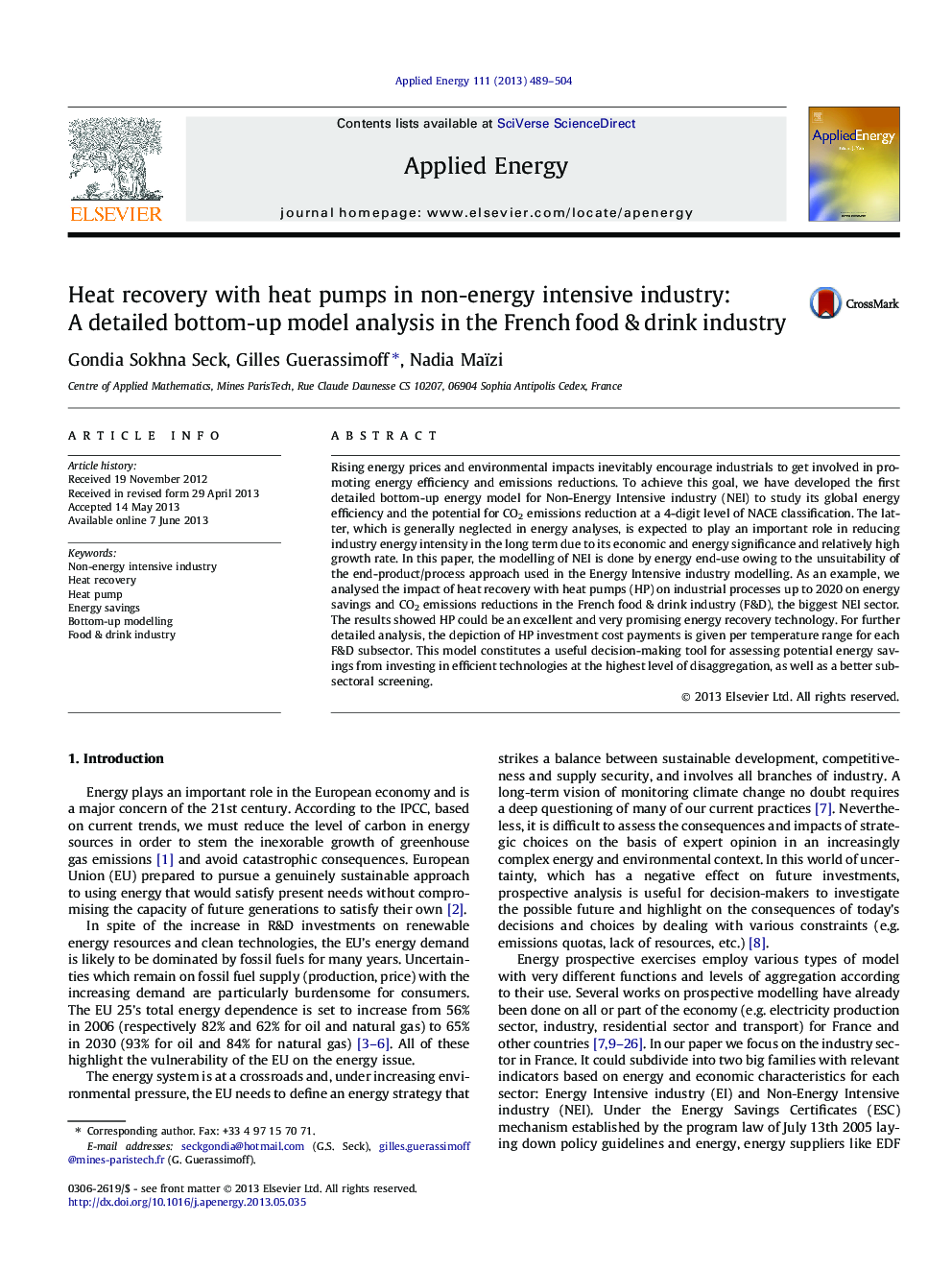| Article ID | Journal | Published Year | Pages | File Type |
|---|---|---|---|---|
| 6692372 | Applied Energy | 2013 | 16 Pages |
Abstract
Rising energy prices and environmental impacts inevitably encourage industrials to get involved in promoting energy efficiency and emissions reductions. To achieve this goal, we have developed the first detailed bottom-up energy model for Non-Energy Intensive industry (NEI) to study its global energy efficiency and the potential for CO2 emissions reduction at a 4-digit level of NACE classification. The latter, which is generally neglected in energy analyses, is expected to play an important role in reducing industry energy intensity in the long term due to its economic and energy significance and relatively high growth rate. In this paper, the modelling of NEI is done by energy end-use owing to the unsuitability of the end-product/process approach used in the Energy Intensive industry modelling. As an example, we analysed the impact of heat recovery with heat pumps (HP) on industrial processes up to 2020 on energy savings and CO2 emissions reductions in the French food & drink industry (F&D), the biggest NEI sector. The results showed HP could be an excellent and very promising energy recovery technology. For further detailed analysis, the depiction of HP investment cost payments is given per temperature range for each F&D subsector. This model constitutes a useful decision-making tool for assessing potential energy savings from investing in efficient technologies at the highest level of disaggregation, as well as a better subsectoral screening.
Related Topics
Physical Sciences and Engineering
Energy
Energy Engineering and Power Technology
Authors
Gondia Sokhna Seck, Gilles Guerassimoff, Nadia Maïzi,
